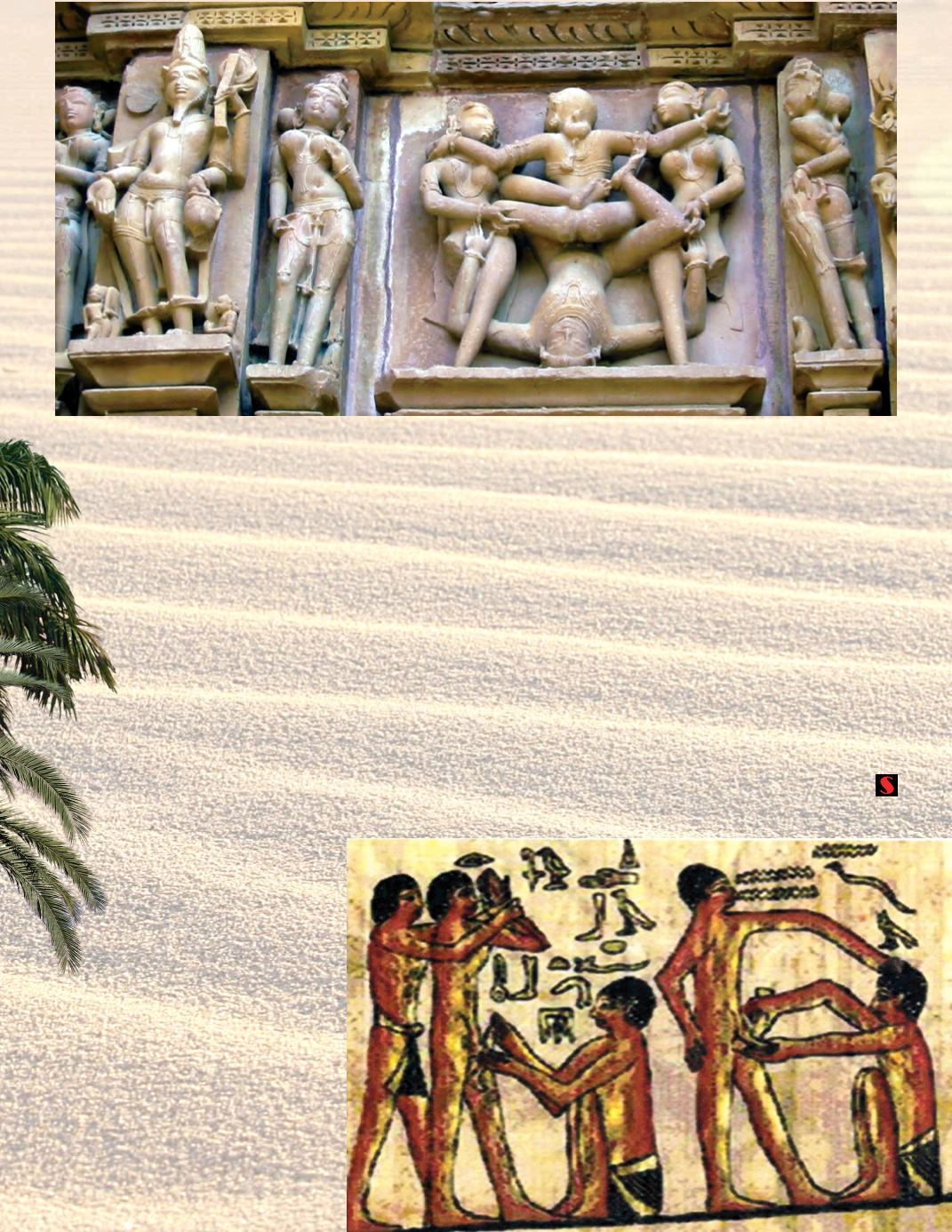

Min
Lettuce was thought to be the favorite food of the
fertility god, Min. He was depicted as a god with
an erect penis, wearing a feathered crown and
carrying a flail. Lettuce was his sacred plant, and
an aphrodisiac to the ancient Egyptians - this
particular species of lettuce was tall, straight and
secreted a milky substance when pressed!
Another aphrodisiac was the onion. They
were forbidden to the priests who had
vowed celibacy, for fear that their passion
might take over, and that they might desecrate
themselves!
Fennel, ginger, pomegranates, coriander in wine
and radishes mixed with honey were thought to
have aphrodisiac qualities, too.
The water lily was also a
symbol of sexuality, as well
as immortality and health. It
was possibly even a narcotic
that the Egyptians used, but
it was more likely to be a sexual
stimulant.
Some of the more unusual aphrodi-
siacs included pearls dissolved in a
cup of wine, baboon feces added to
aphrodisiac ointments!
After Life
The Egyptians thought of their after-
lives as more of a continuation of life
on earth (albeit a better life). This being the case, the
Egyptians believed in sex life after death!
Egyptian men had false penises attached to their
mummies while Egyptian women had artificial nipples
attached. Both would become fully functional in the
afterlife, where they were free to engage in sexual
intercourse, if they so desired.
There were even fertility dolls in many graves - wom-
en with wide, child-bearing hips that were often
carrying children in their arms. Other fertility dolls,
known as paddle dolls, don’t have any legs, and their
bodies end in very wide pubic area, with tiny heads
and arms.
These dolls show that the Egyptians believed that
fertility and sex were interlinked, though the ancient
Egyptians quite clearly enjoyed sex in its own right!














